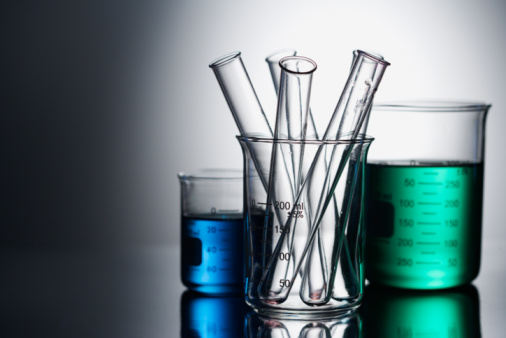
Ever wonder what really goes into the water you’re drinking? For years, researchers have known that there are a minute amount of chemicals that enter our bodies from drinking water—but is the level small enough that it doesn’t harm us? Or are we putting ourselves in harm’s way for no reason?
Unfortunately, those seemingly small amount of chemicals, in particular PFCs (perfluorinated chemicals), are still dangerously high, according to a new study published in the journal Environmental Health. The study, conducted by researchers at the Harvard School of Public Health (HSPH) and the University of Copenhagen, found that the levels of PFCs allowed by the U.S. Environmental Protection Agency (EPA) are still 100 to 1,000 times too high. These types of chemicals are commonly found in drinking water, waterproof clothing, non-stick cookware, and fast-food packaging.
This particular study tested the effects of PFCs on about 500 children under the age of five. The children who had higher levels of PFCs in their blood had a 50% decrease in antibody concentrations that would fight tetanus and diphtheria.
“Most of the research on PFCs is fairly recent. So it’s no surprise that the EPA limits are already outdated,” said Philippe Grandjean, adjunct professor of environmental health at HSPH. “But if they are more 100 times too high, we need to discuss what went wrong and why the limits were so far off.”
This isn’t the first time that researchers have blown the whistle on the dangerous levels of toxins and chemicals entering our bodies from manufactured products, food, and drinks that we consume. A 2012 study also found that higher levels of PFCs in children affected their immune system—to the point that immunizations didn’t protect children who had high levels of PFCs as much as they did children without this high level.
“The negative impact on childhood vaccinations from PFCs should be viewed as a potential threat to public health,” said Grandjean.
Perfluorinated chemicals have been used in foods and other products for over 50 years. At first, researchers assumed that these chemicals would not be able to survive in the environment, thus dismissing any questions about the effect of these toxins in our bodies. That all changed a few years ago, when many environmental organizations—including Health Canada and Environment Canada—realized that these chemicals were very much alive in the environment, and our bodies. A 2011 study found a link between high levels of perfluorinated chemicals and breast cancer in Inuit women, while animal studies found that perfluorinated chemicals weakened the immune system and lessened the animals’ ability to protect themselves from disease. Another study of 69,000 people in Ohio and West Virginia found a link between high exposure to PFCs and health problems, such as liver damage, thyroid problems, weakened immune systems and high cholesterol in children.
While the government has yet to ban PFCs from man-made products and our drinking water, other advocates are refusing to sit idly by until researchers discover even more harms associated with these chemicals. That’s why global clothing chain H&M announced that, as of January 1, 2013, they would no longer use any PFCs in the production of their clothing. In the past, these chemicals were used to make outerwear water repellent.
“PFCs are harmful for the environment, for reproduction and for aquatic organisms,” they announced. “We limit the use of chemicals that are potentially harmful to health or the environment.”
In the meantime, you should avoid non-stick household products and check your personal care products for items that say they contain “fluoro” or “perfluoro.” Many companies are looking for alternatives to PFCs, so you should try to find “green” stain-resistant and non-stick ware items. Fast food packaging, like pizza boxes and microwavable popcorn bags, will most likely contain PFCs so steer clear of them as well.
Sources:
Grandjean, P., et al., “Serum Vaccine Antibody Concentrations in Children Exposed to Perfluorinated Compounds,” JAMA. January 25, 2012; 307(4): 391-397.
Grandjean, P., et al., “Immunotoxicity of perfluorinated alkylates: calculation of benchmark doses based on serum concentrations in children,” Environmental Health 2013; 12: 35.
“H&M puts ban on perflourinated compounds” H&M web site, September 4, 2012; http://goo.gl/1791I, last accessed May 20, 2013.
“Questions and answers on perfluorinated chemicals in food,” Health Canada web site, July 13, 2009; http://goo.gl/v7TD2, last accessed May 20, 2013.
Bonefeld-Jorgensen, E., et al., “Perfluorinated compounds are related to breast cancer risk in greenlandic inuit: A case control study,” Environmental Health 2011; 10: 88.
“Perfluorinated chemicals,” Safer Chemicals web site; http://www.saferchemicals.org/resources/chemicals/pfc.html, last accessed May 20, 2013.
“Major study of Teflon chemical in people suggests harm to immune system, liver, thyroid,” Environmental Working Group web site, May 13, 2008; http://goo.gl/1wzE9, last accessed May 20, 2013.













